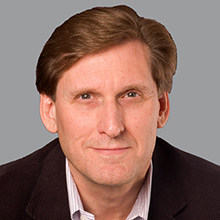Inside Angle
From 3M Health Information Systems
Autonomous coding: Why expert guided AI is critical
Occasionally it’s worth looking back on where we’ve been to have a perspective on where we are going.
One of my early jobs at 3M was working with other engineers to help realize the vision of 3MTM CodeFinder’s creator, John Morgan. John’s premise was that computers would learn the metaphors of health care. His vision was not merely providing the medical coder with an electronic version of the codebook, but rather an expert encoding system that would guide the coder to the most accurate, complete and compliant set of codes.
Having the computer learn the metaphors of coding was based on an expert systems approach. The core of this approach is personified to this day in 3M’s nosology team that captures domain coding knowledge in the form of context-sensitive coding pathways, which enable better coding results for any coder.
As I think about the evolution of coding, it truly is amazing how it started and how John’s vision ties into where we are going.
The evolution of medical coding
Following the introduction of our expert coding pathways, computer-assisted coding started bringing in physician documentation, annotating clinically relevant keywords, and tying those annotations to those coding pathways. This was followed by natural language processing (NLP) using clinically relevant phrases. At its foundation, nosology expert rules were applied to the clinically relevant phrases and codes were autosuggested. Other artificial intelligence (AI) techniques, such as machine learning, were then applied to suggest codes.
From there, recognizing that the role of the medical coder was now starting to transition into more of a validator of the autosuggested codes, evidence review was expedited by an “at-a-glance” view and direct navigation along with a code confidence workflow.
Confident and compliant autonomous coding
As health care organizations continue to face budget constraints and staff shortages, health care leaders need the right automation to address these pressures. To help ensure all the checks and balances are in place for the hospital revenue cycle, automation solutions should be sought that not only have decades of collective expertise in medical coding but also address the regulatory compliance and complexities of payments. Ideally, a complete autonomous and semiautonomous coding solution should integrate seamlessly with the coder workflow to handle the full spectrum of coding complexity. For charts that don’t fully qualify for automation, confidence models should be incorporated that provide the ability to expedite the coder’s work thereby allowing them to focus their skills and time where needed most at both the code and chart level.
The common thread: Applying nosology expertise
Throughout the decades of the coding improvement evolution, it’s interesting that there has been a common thread around AI and applying nosology expertise. As I look back at this process over the years, I have concluded that platforms for AI come and go. Techniques for improving AI come and go (and they get increasingly sophisticated over time). Bringing together the domain expertise of nosology with AI technology, however, is really a marriage of strengths where the whole is greater than the sum of its parts. This marriage of strengths will continue to be at our core going forward with our autonomous and semiautonomous expert coding approach.
The future: AI with nosology expertise
AI is also fundamental to where we are going. A broad definition of AI is any technique that enables machines to mimic human intelligence.
When I think of the beginning of AI, I can’t help but go back to my youth. I grew up in California just a stone’s throw away from Stanford University. In the 1960s, Stanford was working on an AI project attempting to move a small cart autonomously through a manufactured course of obstacles. If you had asked me in the 60s about the practical application of this research, I never would have guessed decades later that one could hail an autonomous taxi and navigate the complex and congested San Francisco traffic without human touch.
Initially, machine learning focused on more statistical methods and models that required a data scientist to define features to learn tasks from the data. With AI advances, neural networks with many layers can now learn representations and tasks directly from data with greater accuracy. In the past, different machine learning techniques were undertaken and applied to generate codes; however, 3M’s NLP teams rely on deep learning to achieve greater accuracy while continuing to leverage our nosology team with an expert-guided AI approach.
Expert rules, along with AI, are extremely helpful when a late breaking regulatory change or new code is introduced. Think about COVID-19: Codes, and regulations around, them did not exist and so there was no previous information for an AI system to learn. Leveraging a hybrid NLP model with a mix of rules and AI allows for greater accuracy in improvements while responding quickly to changing regulations.
Conclusion
As 3M continues to build on John Morgan’s vision of expert coding systems, medical coders will experience an autonomous and expedited semiautonomous workflow and be able to focus on more meaningful tasks that will be far more engaging and leverage their coder skills where needed most. Marrying nosology expertise and AI will provide an expert guided artificial intelligence solution that can eliminate rote coding and provide greater efficiency for simple qualified cases.
David R Bacon is the director of revenue cycle innovation for 3M Health Information Systems.
Tackle your ever-evolving health care challenges by making coding more efficient and accurate.



Great Blog Dave – I always love a retrospective look at where we’ve been to see how far we’ve come. Exciting stuff to come!!
Thank you! Great perspective on history and use of the technology!